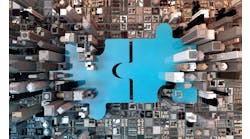The Emerson User Group meeting in the United States, called Emerson Exchange, took place in September, and as INSIDER reported last month, saw the retirement of John Berra. Many reviews of different aspects of this meeting have been presented in the media over the last month. One from the ARC Advisory Group caught my attention, with some different views relating to the Emerson DeltaV S-Series hardware, with its use of Characterization Modules (CHARMs) used to establish electronic marshalling connections, and thereby simplifying the tasks of on-site wiring.
First, a new version of CHARMs with intrinsically safe approval generated interest from ARC, because by incorporating the intrinsically safe barrier functions into the CHARMs modules, the installation avoids the need for the separate barriers and wiring connections typically required for intrinsically safe circuits. ARC sees this as an enhanced value proposition, but also suggest that in North America it just might lead to real acceptance of the intrinsically safe concept, which has not been as widely adopted as it has been in Europe.
Enthusiasm from EPCs
Second, an apparent barrier to the adoption of fieldbus technologies by EPCs was the additional training needed for staff and a fear factor over new technology, when established systems were satisfactory and understood. So it was a real breakthrough for ARC to see Vincent Grindlay, supply chain director at Fluor UK, excited about the advantages apparent with DeltaV Version 11 and its electronic marshalling technology in the build phase of a project.
In fact, this excitement was based more on anticipation than experience. Fluor supply chain solutions worked with a "large process client" to study what would have happened if it had deployed "I/O on Demand" equipment, rather than the DeltaV solution with traditional engineering practices that was in fact used. The Fluor study revealed that the project could have benefited from a startling series of improvements using Emerson's new electronic marshalling.
These improvements included savings on cable trays, installation materials and labor of 25%, and savings on procurement, design and drawings of 50%. Total installed loop cost savings would have been around 30% per loop, leading to a project saving of $2 million, 10% of the automation package. Significantly Grindlay, who in a previous Fluor role was electrical and control systems global excellence leader, suggested that "the cost reduction for design changes would have been 80%, and the cost reduction of two modification packs would have been 45%." Last-minute modifications could also have been completed much faster.



